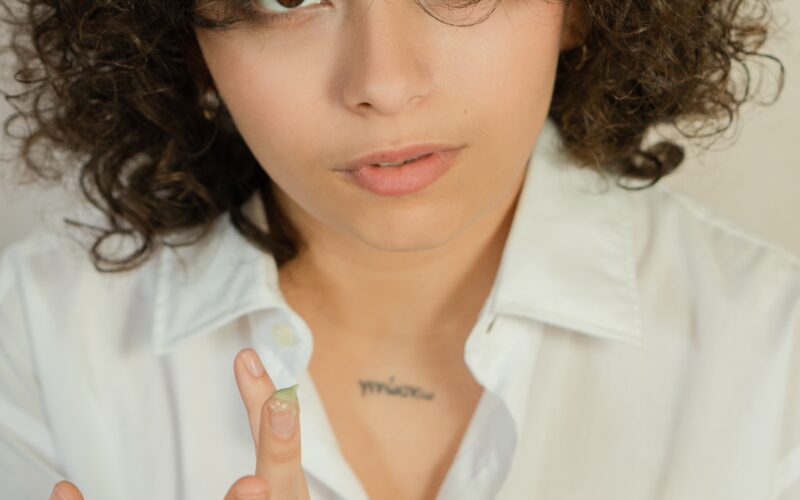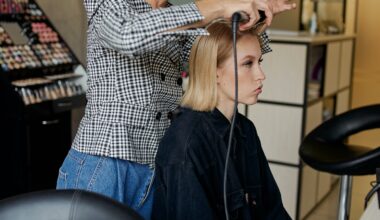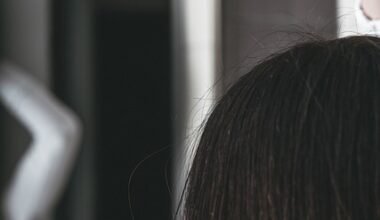Introduction
There’s a certain heartbreak in watching once-vibrant locks turn brittle and lackluster. For many, this becomes a daily reality, often leading to a relentless search for remedies. Amidst the maze of hair treatments and promises, one name often emerges as a potential savior: Keratin. But is this just another buzzword, or does it genuinely hold the power to reverse damage and breathe life back into those tired tresses? In this deep dive, we’ll unravel the mysteries of Keratin Treatments and its transformative impact on damaged hair.
What is Keratin, and What Role Does It Play in Hair Health?
Keratin is a type of protein that is naturally abundant in our bodies. Predominantly found in hair, skin, and nails, it provides the structural strength these tissues require. Imagine it as the scaffolding that holds a building erect. Without sufficient keratin, our hair becomes vulnerable to breakage, thinning, and damage.
The Protective Shield of Hair
Every strand of our hair is layered in cuticles. These cuticles, when healthy, lie flat, giving hair its smooth texture and shine. Keratin plays an indispensable role here. It acts as a protective barrier, shielding these cuticles from external damages, such as environmental pollutants, UV rays, and excessive heat. When hair retains its keratin content, it can better fend off these harmful elements, ensuring minimal damage.
Keratin’s Contribution to Hair Aesthetics
It’s not just about protection. Keratin is also largely responsible for the overall appearance and feel of our hair. Healthy keratin levels typically translate to hair that’s smooth, shiny, and elastic. On the other hand, when keratin depletes, hair loses its sheen, becomes brittle, and tends to get tangled easily.
Natural Keratin Depletion: An Inevitable Reality
Over time and due to various external and internal factors, the natural keratin in our hair diminishes. Factors can range from aging, hormonal changes, to harsh chemical treatments, and frequent heat styling. As keratin reduces, hair’s natural defense weakens, making it more susceptible to damage.
Common Culprits Behind Hair Damage
Harsh Chemical Treatments
From perms to hair color, the chemicals used in various hair treatments can strip hair of its natural oils and keratin. Regularly subjecting hair to these treatments without proper care can lead to significant keratin depletion, resulting in weakened, brittle hair.
Heat Styling Tools
Straighteners, curling irons, and hair dryers might give us the perfect hairstyle, but frequent and unprotected use can damage the hair. High temperatures break down the keratin structure, making hair more vulnerable to external aggressors.
Environmental Factors
Environmental elements like the sun’s UV rays, pollutants, and even saltwater can play havoc with our hair. Prolonged exposure without protection can deteriorate the keratin in hair, leading to fading color, dryness, and breakage.
Inadequate Nutrition
Our hair is a reflection of our internal health. A diet lacking in essential nutrients like protein, vitamins, and minerals can affect the natural production of keratin, making hair more prone to damage.
Physical Aggression
Simple habits, such as aggressive towel drying, tight hairstyles, and frequent brushing, especially when the hair is wet, can cause mechanical damage, leading to breakage and split ends.
Keratin Treatments: A Savior for Damaged Hair?
Understanding Keratin Treatments
Keratin treatments, often referred to as Brazilian hair treatments or smoothing treatments, are salon procedures designed to infuse lost keratin back into the hair. It’s like giving hair a rejuvenating protein shake. The treatment typically involves applying a keratin-infused solution to the hair and then sealing it in with the heat from a flat iron.
Restoring the Hair’s Natural Defense
By replenishing the hair’s keratin content, these treatments rebuild the hair’s natural barrier. This revitalized shield helps hair combat the daily environmental stresses and aggressors it encounters. Moreover, hair becomes less porous, reducing the chances of moisture loss and frizz.
Bringing Back the Shine and Silkiness
One of the most evident outcomes of a keratin treatment is the hair’s renewed luster and softness. As the treatment fills in the porous spots on hair strands caused by damage, hair reflects light more uniformly, resulting in that coveted shine. The added smoothness also means fewer tangles and easier manageability.
Extended Benefits of the Treatment
Apart from immediate visual and tactile improvements, keratin treatments also offer long-term protection. The treatment forms a semi-permanent barrier, lasting for several weeks or even months, depending on the specific treatment and aftercare. This barrier reduces the impact of potential damaging factors, ensuring hair stays healthier for longer.
Not a Magic Bullet, but a Significant Aid
While keratin treatments offer substantial benefits, it’s essential to understand they are not a one-stop solution for all hair woes. They address specific types of damage, primarily related to keratin depletion. For best results, these treatments should be part of a holistic hair care routine, incorporating regular nourishment and protection.
Potential Side Effects and Concerns of Keratin Treatments
The Formaldehyde Factor
A primary concern with some keratin treatments is the use of formaldehyde or its derivatives. This chemical, when heated, releases fumes that can be irritating to the eyes, skin, and respiratory system. Prolonged exposure or treatments done in poorly ventilated areas can exacerbate these effects.
Changes in Hair Texture
While many seek keratin treatments to achieve smoother, more manageable hair, there’s a possibility of the hair becoming too straight or losing its natural volume. This change might not appeal to everyone, particularly those who cherish their curls or waves.
Cost and Maintenance
Keratin treatments, especially high-quality ones, can be expensive. Moreover, maintaining the effects requires specific sulfate-free hair products and avoiding chlorine, which might necessitate a change in one’s hair care routine or even lifestyle (like frequent swimmers).
Potential Hair Dryness
Some individuals have reported increased dryness post-treatment. This dryness can be attributed to the high heat used during the procedure, which might cause moisture loss, or due to the specific formulation of the keratin solution.
Not Suitable for All Hair Types
Keratin treatments might not be the best option for everyone. Those with overly damaged hair, recent chemical treatments, or specific hair conditions should consult with a hair professional before undergoing a keratin treatment.
Conclusion
Keratin treatments, no doubt, present a promising avenue for those with damaged hair, especially those seeking smoother, shinier locks. Like any cosmetic procedure, while they come with a myriad of benefits, it’s essential to be informed about potential side effects. The efficacy of such treatments varies based on hair type, the severity of damage, and individual needs. Consulting with a professional stylist and understanding one’s hair are paramount to making the most out of keratin treatments.
Key Takeaways
- Hair Damage and Keratin’s Role: Keratin is the primary protein that constitutes hair, offering strength and structure. Damage to hair often depletes its keratin content, leading to issues like breakage, frizz, and dullness.
- Causes Behind Hair Damage: Factors like harsh chemical treatments, frequent use of heat styling tools, environmental factors, inadequate nutrition, and physical aggression are common culprits behind hair damage.
- Benefits of Keratin Treatments: Keratin treatments replenish lost keratin, restoring hair’s natural defense against damage. They enhance shine, silkiness, and offer prolonged protection.
- Potential Side Effects: Concerns about keratin treatments include the possible use of formaldehyde, unintended changes in hair texture, the cost and maintenance associated with the treatment, potential hair dryness, and their unsuitability for certain hair types.
- Informed Decision-making: Armed with this knowledge, one can make a well-informed decision about keratin treatments, ensuring the health and vitality of their hair.





